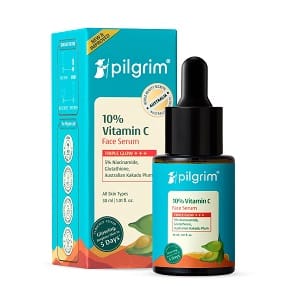Did you know that skin cancer is the most common form of cancer in the United States? Sunscreen is more than just a beach day essential. It’s your everyday defense against sun damage. It does more than just prevent sunburn.
Sunscreen is a vital part of any skincare routine. This offers protection from harmful UV rays. It also helps prevent premature aging, reducing the risk of skin cancer. Let’s explore how this works!
Understanding UV Rays and Their Impact
The sun emits different types of ultraviolet (UV) rays. These rays can have various effects on your skin. Understanding them helps you appreciate the importance of sunscreen.
UVA Rays: The Silent Agers
UVA rays penetrate deep into the skin. These rays damage collagen. This can cause wrinkles and long-term skin aging. UVA rays are present all year round. They can even penetrate glass. They are a constant threat to your skin’s youthfulness.
UVB Rays: The Burn Culprits
UVB rays are responsible for sunburn. They also increase your risk of skin cancer. The intensity of UVB rays varies. It depends on the time of day and season. They are strongest between 10 AM and 4 PM. Extra care is needed during summer months!
The Link Between UV Exposure and Skin Cancer
UV rays damage the DNA in your skin cells. This damage can lead to mutations. These mutations can potentially lead to skin cancer. Regular sunscreen use minimizes this DNA damage. It’s a key step in cancer prevention.
The Benefits of Sunscreen: More Than Just Sunburn Prevention
Sunscreen offers many benefits. The most important is the reduced sunburn risk. The advantages extend far beyond that.
Reducing the Risk of Skin Cancer
Sunscreen is a powerful tool. It reduces the risk of developing skin cancer. Studies show that regular sunscreen use can significantly lower the risk. Reduce the chance of melanoma by 50% by using sunscreen daily.
Preventing Premature Aging
Sunscreen helps maintain youthful skin. It prevents wrinkles, fine lines, and age spots. UV rays break down collagen. This leads to premature aging. Sunscreen blocks these rays. This keeps your skin looking younger for longer.
Protecting Against Sunburn
Sunburn causes immediate discomfort and long-term damage. It damages skin cells. Sunscreen acts as a barrier. It prevents these burns. It minimizes long-term harm. It keeps your skin healthy and comfortable.
Choosing the Right Sunscreen: SPF, Broad Spectrum, and Skin Type
Selecting the right sunscreen is key. SPF, broad spectrum protection, and your skin type matter. These factors ensure you get the best possible protection.
Understanding SPF: What the Numbers Really Mean
SPF stands for Sun Protection Factor. The SPF number indicates how well the sunscreen protects you. It protects you from UVB rays. SPF 30 blocks about 97% of UVB rays. Higher SPFs offer slightly more protection.
The Importance of Broad Spectrum Protection
Broad spectrum sunscreen protects against both UVA and UVB rays. Both contribute to skin damage. Make sure your sunscreen says “broad spectrum”. This ensures complete protection.
Sunscreen for Different Skin Types: Oily, Dry, and Sensitive
Different skin types need different sunscreens. Oily skin benefits from oil-free options. Dry skin needs hydrating formulas. Sensitive skin requires mineral sunscreens. These formulas contain zinc oxide or titanium dioxide.
How to Apply Sunscreen Correctly for Maximum Protection
Applying sunscreen correctly is essential. You must do this for effective protection. The right amount, timing, and reapplication matter.
The Right Amount: How Much Sunscreen to Use
Use at least one ounce of sunscreen. Cover your entire body. Don’t forget often-missed spots. Ears, neck, and tops of feet are important. Apply generously to these areas!
When to Apply: Timing is Key
Apply sunscreen 15-30 minutes before sun exposure. This allows it to bind to your skin. Don’t wait until you’re already outside. Plan ahead for maximum protection.
Reapplication: How Often and Why
Reapply sunscreen every two hours. Also, reapply after swimming or sweating. Even “water-resistant” sunscreens wear off. Reapplication maintains a protective barrier.
Beyond Sunscreen: Additional Sun Protection Measures
Sunscreen is essential. Yet, there are other ways to protect your skin. These extra steps enhance your overall sun safety.
Protective Clothing: Hats, Sunglasses, and Long Sleeves
Wear protective clothing. This includes hats, sunglasses, and long sleeves. Clothing can block UV rays. It provides an extra layer of defense.
Seeking Shade: Especially During Peak Hours
Avoid direct sunlight during peak hours. This is usually between 10 AM and 4 PM. Seek shade under trees or umbrellas. This minimizes UV exposure.
Conclusion
Sunscreen is an essential tool in protecting your skin. It reduces the risk of skin cancer. It prevents premature aging and sunburn. Make sunscreen part of your daily routine. Prioritize sun protection. Protect your health and beauty for years to come.








